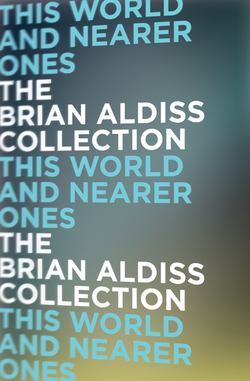Читать книгу This World and Nearer Ones - Brian Aldiss - Страница 9
Nesvadba: In the Footsteps of the Admirable Čapek
ОглавлениеJosef Nesvadba and I are about the same age. We have met twice, once when he was travelling through London, and, many years later, when I was travelling through Prague, where he lives. This seems entirely appropriate, since Nesvadba’s fictions are often filled with long and complex journeys. He is that compelling kind of writer who reminds us that our lives are really somewhat ramshackle fictions, full of unlikely coincidences and people who do not always behave in character.
The perfidious plot-lines of our lives first brought us together in 1965, when something Nesvadba said made a striking impression.
He was talking about his stories, and how he was attempting a sort of psycho-fiction, as he called it. We were agreeing, I seem to recall, that authors who called themselves science fiction writers should not regard science fiction as simply realistic simulation of an hypothecated future; we saw it more as a contemporary form of celebration of the mysteries that pervade human life. We admitted ruefully that the other kind was more commercially popular and, at this point, I underwent the experience of hearing Nesvadba say that a collection of his psycho-fiction stories had been published in Prague in a paper bag.
Prague is a magnificent city where High Baroque and Art Nouveau styles in architecture meet. At the entrance to Nesvadba’s flat in the centre of the city, two voluptuous caryatids, less demure than Artemis would have allowed, guard the door he passed through daily. In the celebrated Golem Restaurant, I bought a packet of Apollo-Soyuz cigarettes and smoked them, though I normally detest cigarettes. I stood in the apartment building where Franz Kafka was born, looking up the winding stairwell; by a lugubrious turn of fate, the building has now been taken over by one pseudopod or other of Communist officialdom. Sometimes I have nightmares, dreaming I am Kafka. So I was scarcely bowled over, or only slightly bowled, to hear that publishers in Kafka’s city should have issued Josef Nesvadba’s work in this unorthodox manner.
The more I considered, the more it seemed appropriate that his kind of fiction should receive such treatment, the more easily I could visualise readers dipping into the bag, bringing out a tale like a pastrami sandwich, and munching thoughtfully on it in one of the little cafés in the shade of Hradčany Castle.
As are many Czechs, Nesvadba is a cosmopolitan, as familiar with Hollywood as with Paris. He speaks several languages, and his English is good. However, on this occasion I had mis-heard him. His paper bag was in actuality the less unusual paperback. I’m sorry about that. I still feel that his food for thought, and his story-telling techniques, are remarkable enough to be singled out for special treatment. The present publishers have voted against the paper bag format also, but it remains a privilege to be introducing Czechoslovakia’s most distinguished science fiction writer to paperback readers in this country.
These stories[1] are set in the narrow alleyways of the mind. Black humour is scarcely dispersed by low-wattage electric bulbs. Whole life-cycles of ghastliness are displayed with gusto in very few lines.
‘The dragoons had been the pride of our town. They had ruuined my marriage. Two years after the wedding my wife ran away with Captain Imre Kovacs to Salgotaryan. Perhaps that’s what turned me against soldiers. Especially dragoons. I gave up my flat and never left my basement laboratory after that. I sleep there and a waitress brings me my meals from the restaurant. I have few demands on life.’
